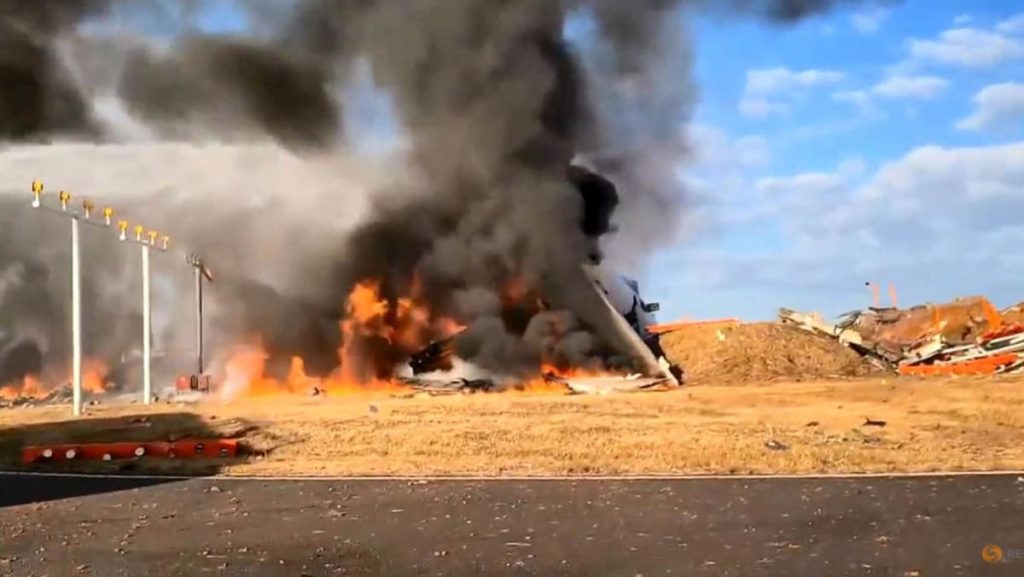The tragic aftermath of the Asiana Airlines Flight 214 crash at San Francisco International Airport unfolded in a heartbreaking tableau of grief, confusion, and desperate pleas for information. Hours after the Boeing 777 struck the seawall short of the runway, families of passengers and crew began to converge on the airport’s arrival area. The scene was one of chaotic sorrow, with the anguished cries of loved ones echoing through the terminal as Red Cross volunteers attempted to provide some measure of comfort with blankets and support. The air was thick with tension and uncertainty, the initial shock giving way to a mounting sense of dread as the grim reality of the situation began to sink in. The agonizing wait for news was punctuated by sporadic announcements, each one carrying the weight of unimaginable loss.
The raw emotion intensified as a medic began the somber task of reading the names of the victims identified through fingerprint analysis. For 22 families, the confirmation of their worst fears brought a fresh wave of grief. Screams and uncontrolled weeping filled the air as the names were read, each syllable a stark reminder of the lives suddenly and violently extinguished. Amid the outpouring of grief, airport personnel attempted to establish some semblance of order, circulating papers for families to provide contact information, a bureaucratic necessity jarringly juxtaposed with the profound emotional turmoil surrounding them. The palpable sense of disorientation and desperation underscored the profound impact of the sudden tragedy on those left behind.
Adding to the already overwhelming emotional burden, the families grappled with a frustrating lack of information. One relative, driven to desperation, took to a microphone, publicly pleading for answers from authorities about his deceased older brother. His simple, anguished cry, “I don’t know what’s going on. I don’t know,” encapsulated the collective confusion and helplessness felt by many. Another relative, overwhelmed by the presence of journalists documenting the scene, voiced his outrage, accusing the media of exploiting their grief. His plea, “We are not monkeys in a zoo. We are the bereaved families,” highlighted the raw vulnerability of those grappling with their loss in the harsh glare of the public eye.
Outside the terminal, the grim reality of the disaster was starkly evident. A line of mortuary vehicles stood ready to transport the deceased, a chilling reminder of the scale of the tragedy. Authorities confirmed the establishment of a temporary morgue, underscoring the enormity of the task ahead. At the crash site itself, the scene was one of devastation. The pungent smell of aviation fuel mingled with the metallic scent of blood, a horrifying olfactory testament to the violence of the impact. Workers in protective suits and masks meticulously combed the wreckage, while soldiers searched the surrounding bushes, a somber and painstaking process of recovery and investigation.
In the immediate aftermath of the crash, frantic efforts were made to rescue survivors, particularly those trapped in the tail section of the aircraft. Airport officials confirmed these initial rescue attempts, highlighting the desperate race against time to save lives amidst the mangled wreckage. The crash, tragically, marked the deadliest aviation accident involving a South Korean airline since the 1997 Korean Air crash in Guam, which claimed the lives of over 200 people. This historical context underscored the magnitude of the San Francisco disaster and its devastating impact on South Korea.
The investigation into the cause of the crash quickly focused on several potential factors. Authorities, including South Korea’s transport ministry, began exploring the possibilities of a bird strike and adverse weather conditions. Reports from Yonhap News Agency, citing airport authorities, suggested a bird strike might have caused a malfunction in the landing gear. Further supporting this theory, a transport ministry official revealed that the control tower had issued a bird strike warning shortly before the pilots issued a mayday call. While the official didn’t specify whether the pilots reported a bird strike, the timing of the warning and the mayday call suggested a possible connection. Adding a chillingly personal dimension to the investigation, a local news agency, News1, reported a passenger’s final text message to a relative: “A bird is stuck in the wing. Should I say my last words?” This poignant message added a layer of human tragedy to the technical investigation, bringing the devastating reality of the crash into sharp focus. The passenger manifest revealed the international scope of the tragedy, with two Thai nationals among the passengers, the majority of whom were South Korean citizens.

